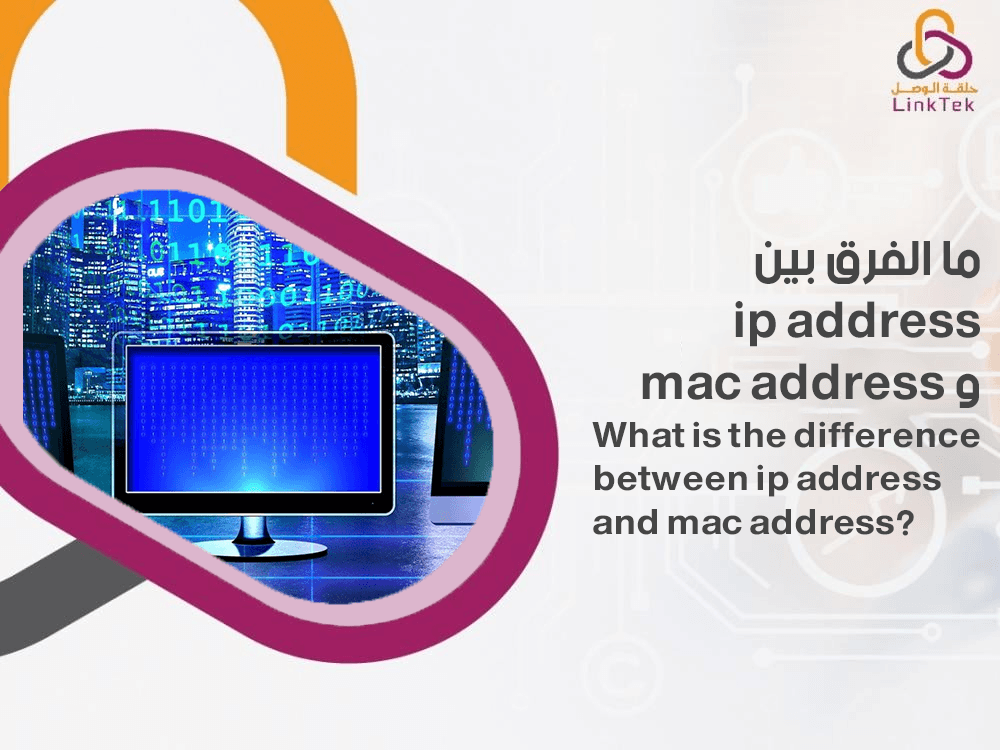
With the advancement of technology in the modern era, the use of electronic devices of various types has become extremely widespread. These devices are indispensable for managing different tasks, whether for business, study, or even entertainment. Therefore, it is essential to understand several concepts related to internet connectivity, troubleshooting device and network issues, and more. Among the most critical concepts to grasp is the difference between an IP address and a MAC address. In this article, we provide a detailed explanation of both and highlight the importance of each.
What is an IP Address? What is a MAC Address? What is the Difference Between an IP Address and a MAC Address?
An IP address, or Internet Protocol address, is an address assigned by the network provider or Internet Service Provider (ISP), whether for a local network or the internet. It identifies the device's address on the network. An IP address consists of 32 bytes or 128 bytes and is formatted as four sets of numbers separated by dots or eight sets of numbers and letters separated by colons.
On the other hand, a MAC address, or Media Access Control address, is assigned by the device manufacturer's interface. It is a unique address used to identify the Network Interface Card (NIC). The MAC address format is either 48 bytes or 64 bytes and consists of six sets of characters, each containing two digits separated by colons.
Answering the Question: What is the Difference Between an IP Address and a MAC Address?
- Definition: As mentioned earlier, an IP address is the Internet Protocol address related to the behavior of devices on the network, whether it's a local network or the internet. In contrast, a MAC address is the Media Access Control address, which specifically identifies the NIC.
- Assignment Method: The IP address is assigned by the network provider, whether it's a local network or the internet, and it is specific to the device on the network. The MAC address, however, is assigned by the manufacturer of the NIC.
- Format: The IP address format is either 32 bytes or 128 bytes, whereas the MAC address format is either 48 bytes or 64 bytes.
- Structure: An IP address consists of four sets of numbers separated by dots or eight sets of numbers and letters separated by colons. In contrast, a MAC address consists of six sets of characters, each containing two digits separated by colons.
- Usage: The IP address is used for broadcasting or multicasting, determining the behavior and interaction of devices on various networks. The MAC address is used solely for broadcasting, providing a unique identification for the device.
- Concealability: The IP address can be hidden using routers or VPNs, while the MAC address cannot be hidden.
What are the Importance and Uses of an IP Address?
As mentioned in the definition, an IP address is essential for identifying a device on networks. Therefore, the uses of an IP address are as follows:
- Device Identification: The IP address assigns a unique identity to each device on the network.
- Data Transmission: The IP address facilitates the easy sending and receiving of data by directing and guiding information from devices to websites through their IP addresses.
- Remote Network Management: It allows for easy remote management of networks through the network's IP address.
- Device Communication: It enables communication between different devices on the network through their respective IP addresses.
What are the Importance and Uses of a MAC Address?
The MAC address, or Media Access Control, is primarily used to identify the device's interface card. Thus, its uses include:
- Data Transmission Within Local Networks: The MAC address is used to direct and send data within the local network.
- Device Connectivity: It connects devices to establish a secure connection or to send and receive various media.
- Troubleshooting Network Issues: The MAC address helps in diagnosing and fixing network connectivity issues.
- Network Access Control: Users can use MAC addresses to track devices connected to the network and identify unauthorized devices.
- Enhanced Security: It increases device security by preventing unauthorized devices from connecting to the network using their MAC addresses.
Understanding the difference between an IP address and a MAC address is crucial, as it helps maximize the benefits of each, protect devices from unwanted access or hacker attacks, and more.

